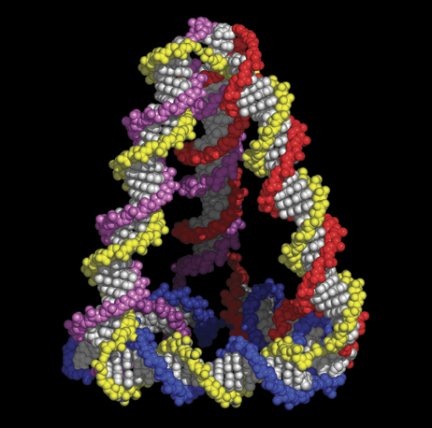One of the most talked-about near term applications of nanotechnology is in in nanosensors – devices which can detect the presence of specific molecules at very low concentrations. There are some obvious applications in medicine; one can imagine tiny sensors implanted in one’s body, which continuously monitor the concentration of critical biochemicals, or the presence of toxins and pathogens, allowing immediate corrective action to be taken. A paper in this week’s edition of Nature (editor’s summary here, subscription required for full article) reports an important step forward – a nanosensor made using a process that is compatible with the standard methods for making integrated circuits (CMOS). This makes it much easier to imagine putting these nanosensors into production and incorporating them in reliable, easy to use systems.
The paper comes from Mark Reed’s group at Yale. The fundamental principle is not new – the idea is that one applies a voltage across a very thin semiconductor nanowire. If molecules adsorb at the interface between the nanowire and the solution, there is a change in electrical charge at the interface. This creates an electric field which has the effect of changing the electrical conductivity of the nanowire; the amount of current flowing through the wire then tells you about how many molecules have stuck to the surface. By coating the surface with molecules that specifically stick to the chemical that one wants to look for, one can make the sensor specific for that chemical. Clearly, the thinner the wire, the more effect the surface has in proportion, hence the need to use nanowires to make very sensitive sensors.
In the past, though, such nanowire sensors have been made by chemical processes, and then painstakingly wiring them up to the necessary micro-circuit. What the Reed group has done is devised a way of making the nanowire in-situ on the same silicon wafer that is used to make the rest of the circuitry, using the standard techniques that are used to make microprocessors. This makes it possible to envisage scaling up production of these sensors to something like a commercial scale, and integrating them a complete electronic system.
How sensitive are these devices? In a test case, using a very well known protein-receptor interaction, they were able to detect a specific protein at a concentration of 10 fM – that translates to 6 billion molecules per litre. As expected, small sensors are more sensitive than large ones; a typical small sensor had a nanowire 50 nm wide and 25 nm thick. From the published micrograph, the total size of the sensor is about 20 microns by 45 microns.
